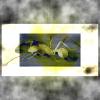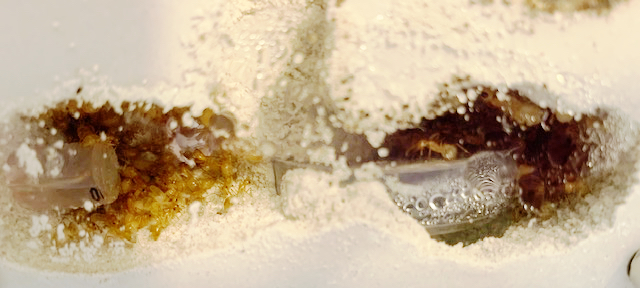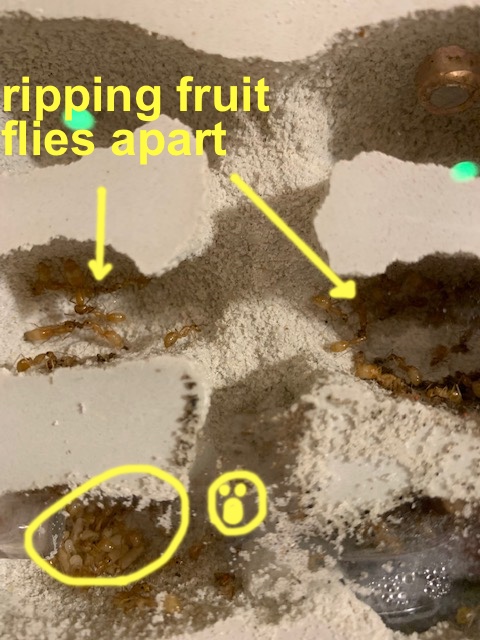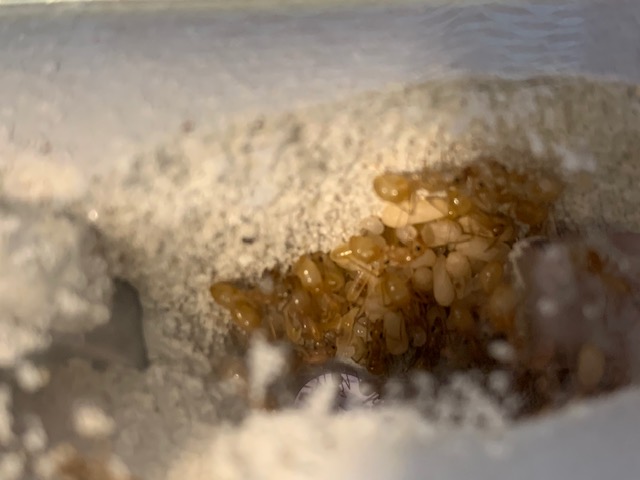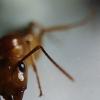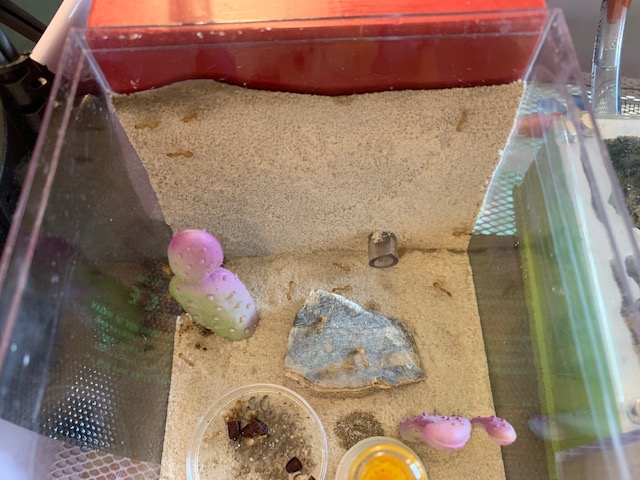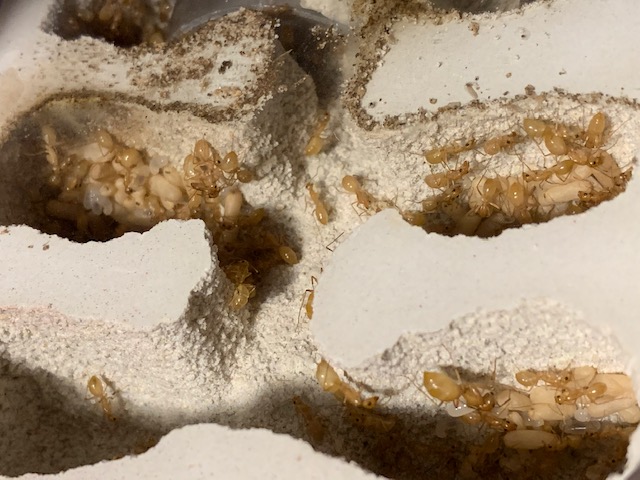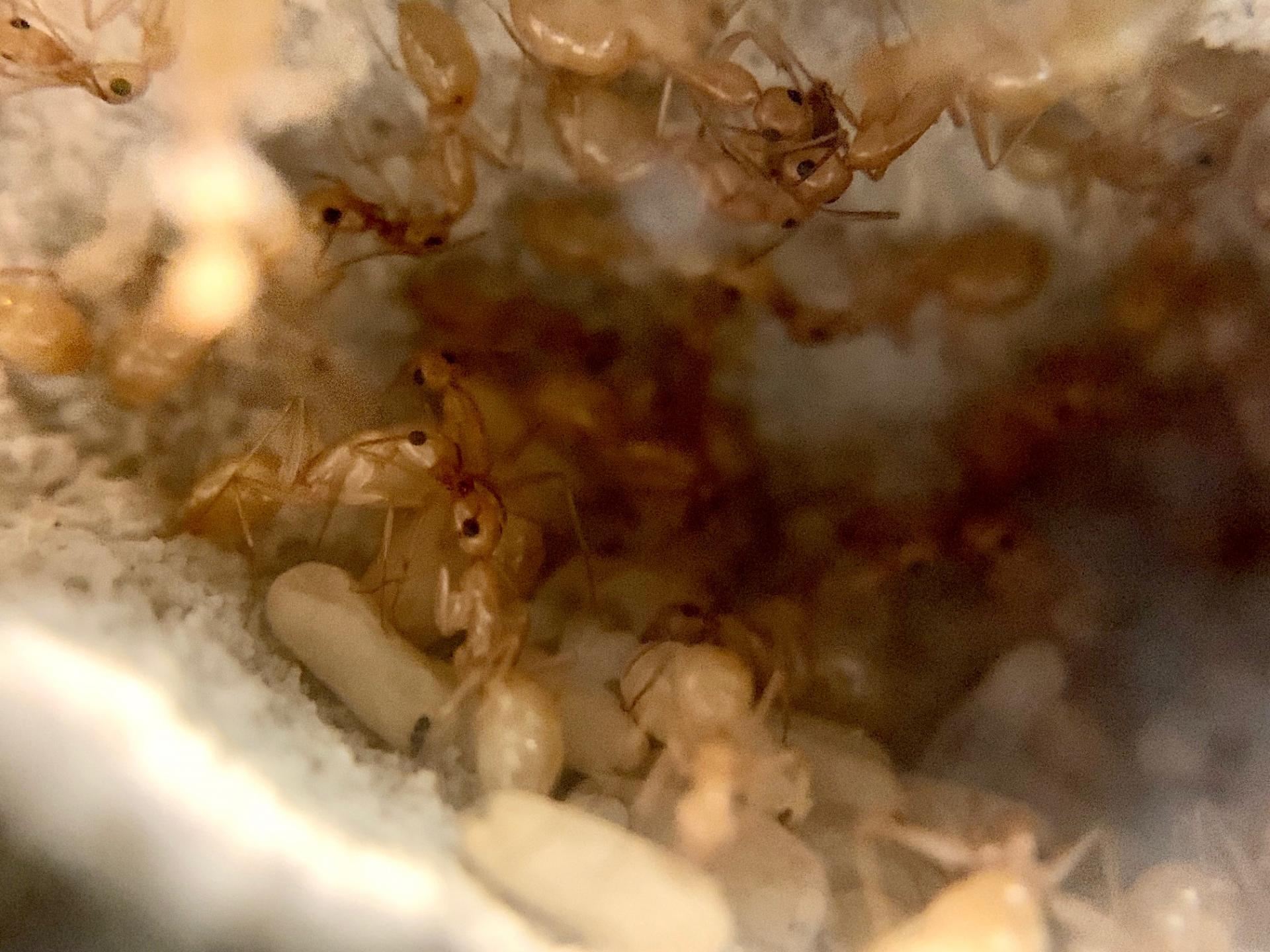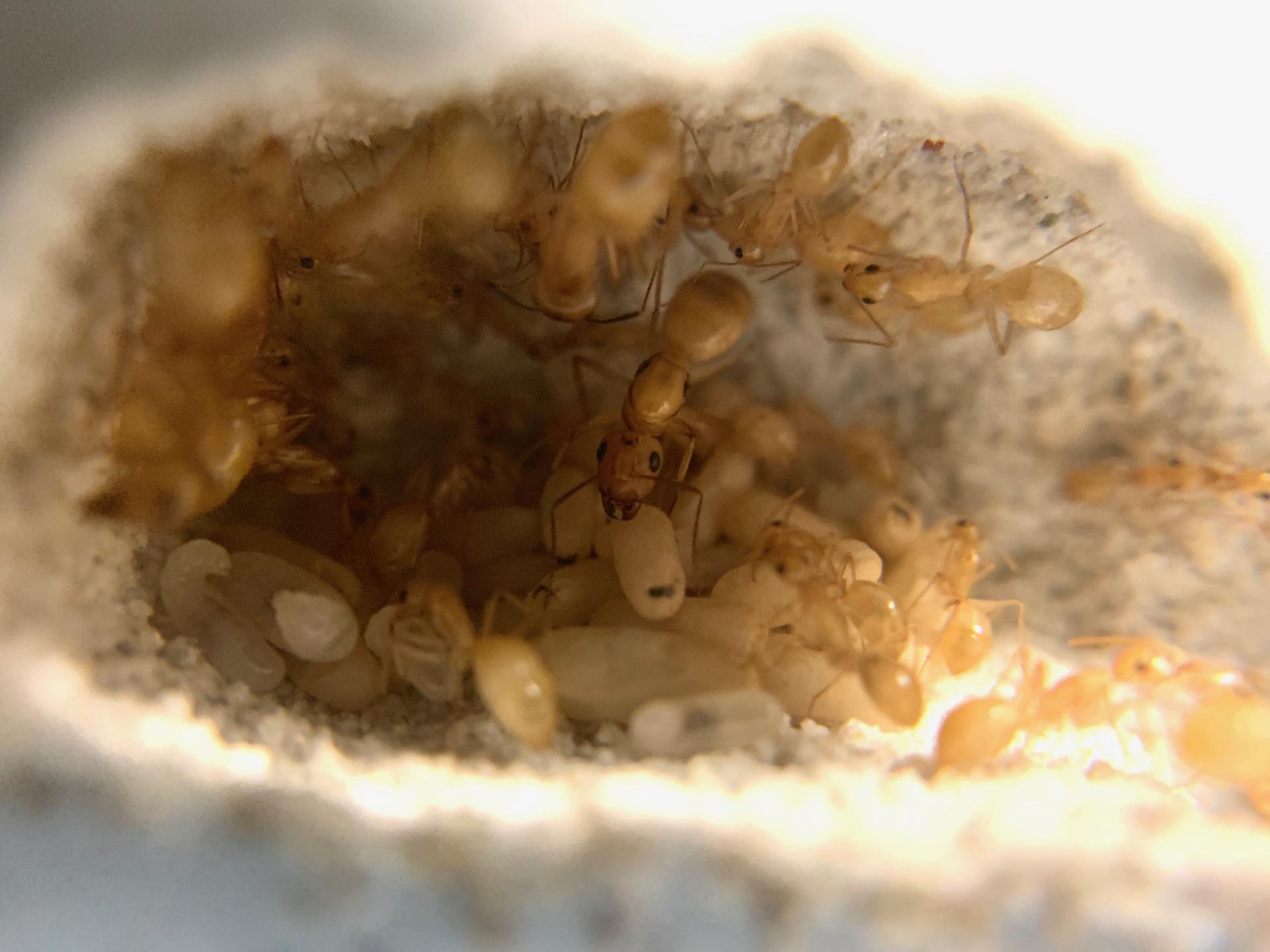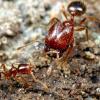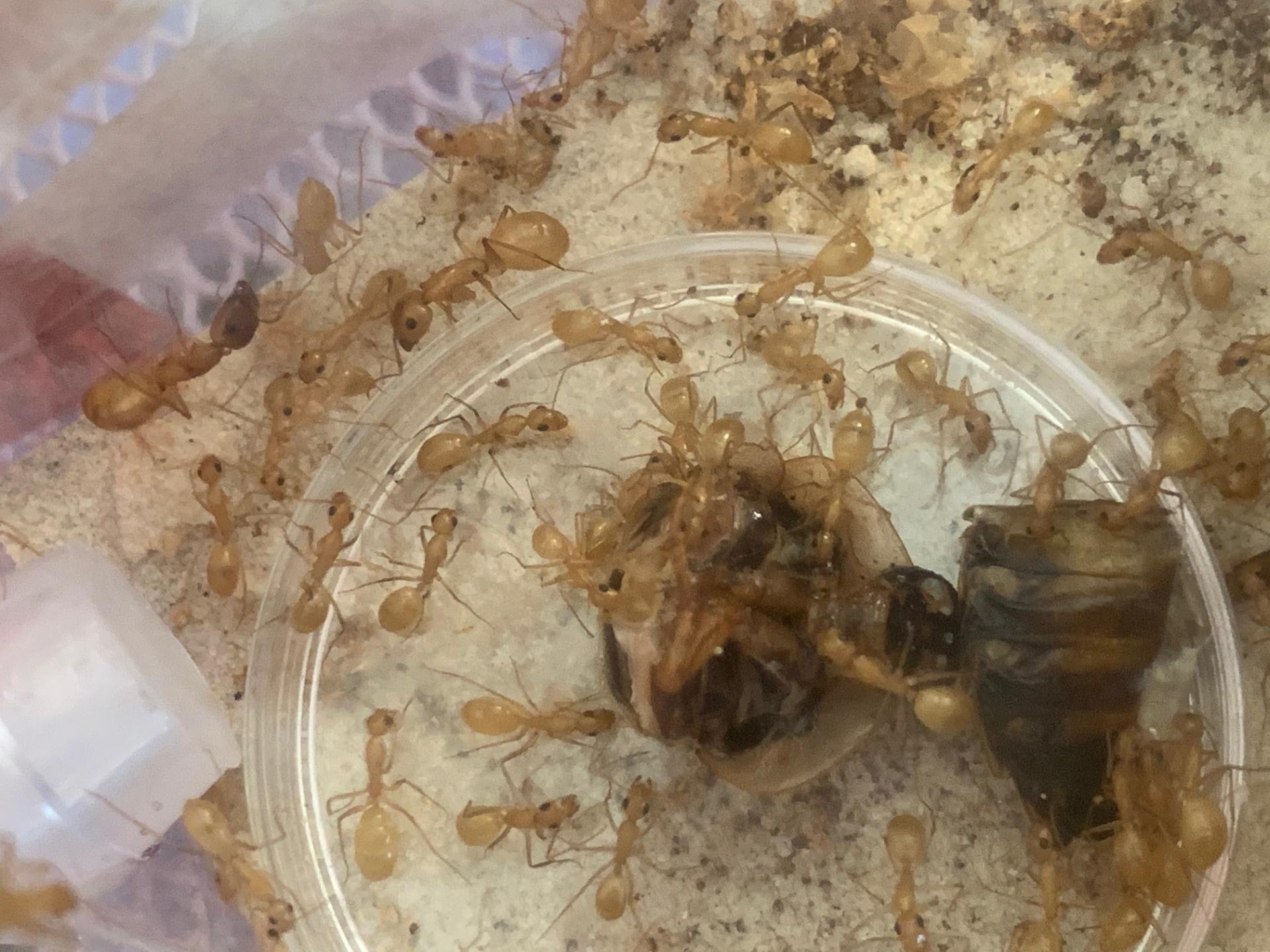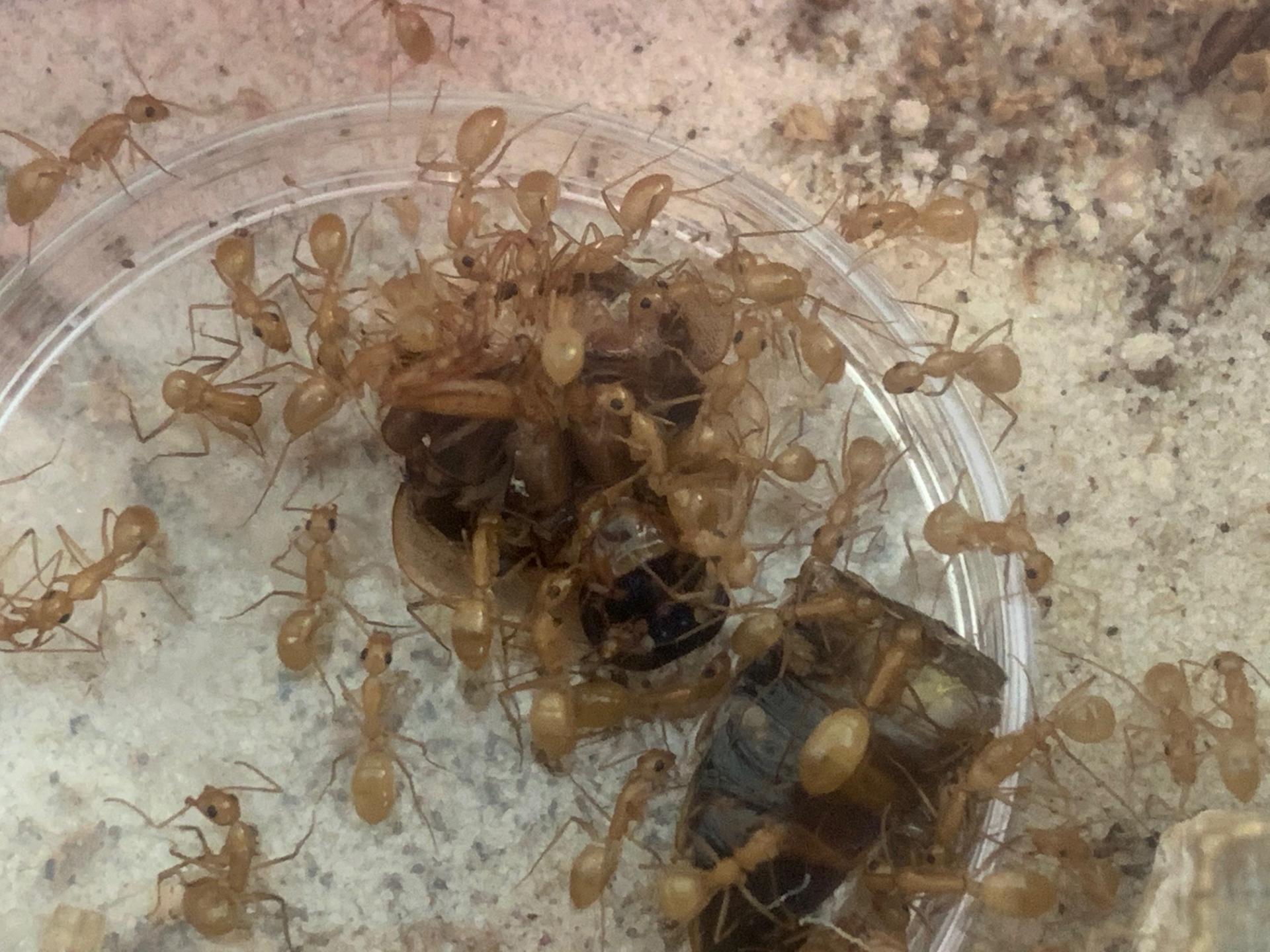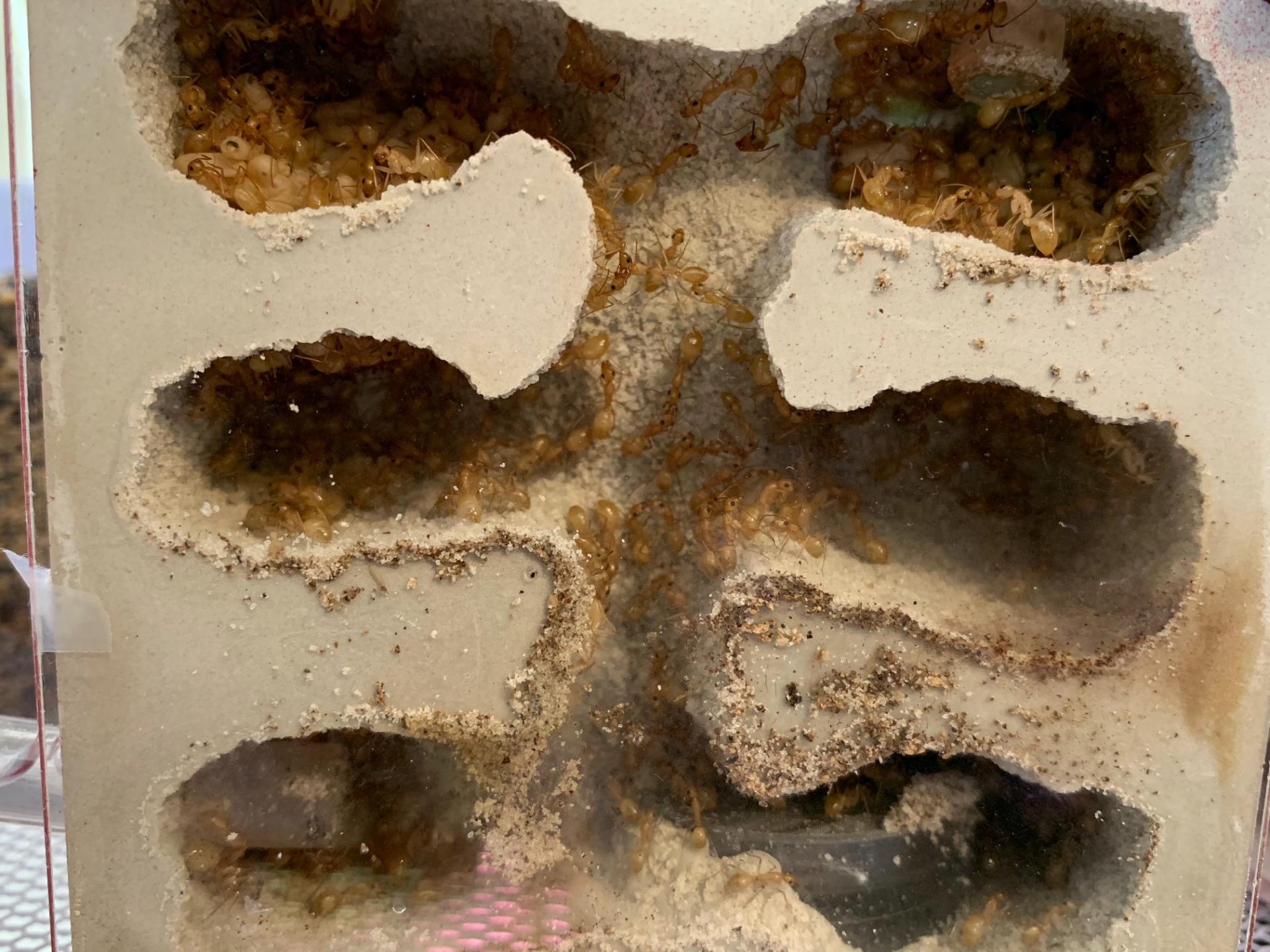2020.4.10
Remember I said fraggles learned? Well, they are now expert fruit fly catchers, instead of the haphazard and clueless bumbling they used to do.
Now when they scent fruit flies in their Fortress outworld (like when I dump some in like I did today), a bunch of workers rush out and they run around catching fruit flies. And instead of hauling them to the garbage dump, they haul them into the nest into a neat pile, and then bring their brood over.
The chamber on the left (which connects to the outworld) is where the fraggles bring the fruit flies. I think I took this photo soon after they collected fruit flies, because you can see the huge mob of ants that aren't usually there in such quantity. The right chamber has the water tower where most of them usually like to hang out. (You can still see a lot there, in the darkest shadowy corner. That's where the queen likes to hide.)
The glass is a watery mess because I had a water accident a few days ago. I was filling a nestmate with water and accidentally flooded the nest. The glass got really messy afterward.
I did take the red filter off to see if they will stop freaking out in the light so much.
With the red filter off there are fewer workers hanging out in the levels above.
After the interior has had a chance to dry out a bit, I am going to try to figure out how I can clean the glass. ![]() I don't like condensation as I know it can kill ants, but trying to clean the glass is also difficult and can kill ants.
I don't like condensation as I know it can kill ants, but trying to clean the glass is also difficult and can kill ants.
And to reiterate, the way I taught fraggles that fruit flies are food is I dumped some fruit flies into the nest directly, as well as their small mini-hearth outworld (pre-Fortress). When their few workers were in their BIG, separate outworld (pre-Fortress), the workers bumbled around, attacked fruit flies more like enemy ants, then dumped them in the trash. In other words, the adventurous explorer workers couldn't figure out that fruit flies were food. But fraggles had enough smart stay-at-home ants that when fruit flies were shoved into the nest or brought through the nest on the way to the external big outworld trash, some ants figured out the food value. Once some ants started to "get" that fruit flies were food, the memo slowly made its way through the whole colony.
It seems to depend on colonies as to whether or not they immediately figure out what to do with fruit flies or not. My C. sansabeanus still don't get it.
Edited by OhNoNotAgain, April 10 2020 - 10:08 PM.


